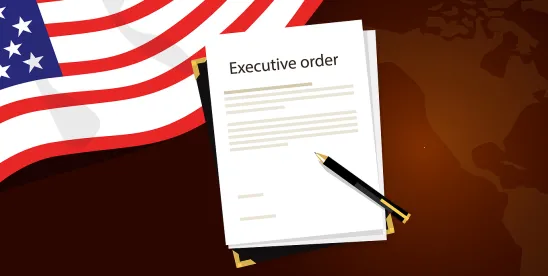Takeaways:
- Trump Accounts are a new type of custodial savings account for children under 18, established under new Internal Revenue Code section 530A.
- For U.S. citizen children born between January 1, 2025, and December 31, 2028, there’s a $1,000 seed contribution from the U.S. Treasury. The White House states the purpose is to “afford a generation of children the chance to experience the miracle of compounded growth and set them on a course for prosperity from the very beginning.”
- Employers can contribute up to $2,500 per year (adjusted for cost-of-living increases after 2027) to a child’s Trump Account, and this contribution is generally tax-free to the employee. Total contributions are capped at $5,000 per year per child (adjusted after 2027 for cost-of-living increases).
- Trump Accounts must be invested in eligible mutual funds or exchange-traded funds that track qualified indices like the S&P 500, with annual fees not exceeding 0.1 percent of the account balance. Earnings are tax-free.
- Distributions are generally restricted until age 18, with exceptions for rollovers or correcting excess contributions. After age 18 and until age 59 1/2, withdrawals may be subject to a 10% penalty, with exceptions for education and home-purchase expenses
Among the federal tax changes made by the “One Big Beautiful Bill Act” is a new kind of custodial savings account for children (who’ve been issued a social security number) to which their or their parents’ employers (as well as others) may contribute. These accounts are dubbed “Trump Accounts.” These accounts, added under new section 530A of the Internal Revenue Code (“Code”), are a type of individual retirement account (“IRA”) for children who’ve not reached age 18 and, for those children born between January 1, 2025 and December 31, 2028, who are United States citizens, there is a $1,000 seed contribution from the United States Treasury under a pilot program.
The White House explained the public policy purpose for Trump Accounts by saying, “This will afford a generation of children the chance to experience the miracle of compounded growth and set them on a course for prosperity from the very beginning.” In addition to the seed money for children born between 2025 and 2029, Trump Accounts differ from other existing retirement savings accounts because contributions may be made before the child-beneficiary begins to recognize taxable income. Such savings accounts for children have been proposed before, for similar public policy reasons, but were not enacted.
Beginning in July 2026, employers (of a child under age 18 or such a child’s parent) may contribute to Trump Accounts along with contributions made by the child, parent, and others. It is not clear whether the $2,500 employer contribution limit is an annual limit or whether the employer’s contribution for any eligible child is limited to $2,500 for that child’s lifetime. It’s also not clear how the rules apply in cases where an employee has multiple eligible children. To the extent that the employer’s contribution to a Trump Account does not exceed $2,500, the contribution generally will be tax-free to the employee. However, under rules similar to those applicable to dependent care assistance programs (Code Section 129), eligibility and benefits may not discriminate in favor of highly compensated employees. Employers must provide employees with notice of the program and an annual statement of any contributions made.
Total contributions are capped at $5,000 per year per child/account (which amount will be adjusted after 2027 for cost-of-living increases). Certain additional amounts (that is, above the cap) may be rolled over into a Trump Account. Once the child reaches age 18, the child must have taxable income to be eligible to contribute, and it appears contributions then become subject to the rules generally applicable to IRAs.
The account must be invested only in eligible investments, which are mutual funds or exchange-traded funds that track the returns of a qualified index, such as the Standard and Poor’s 500 stock market index. The investment fund cannot impose annual fees and expenses over 0.1 percent of the account balance. Earnings are tax-free.
Distributions generally are restricted until the child reaches age 18, with limited exceptions for rollovers to another Trump Account (there only can be one per child) or to an ABLE account, or distributions to correct excess contributions. Once the child/account holder reaches age 18 and until they reach age 59 1/2, it appears that withdrawals and distributions will be subject to the Code section 72 penalty of 10%, with exceptions for certain withdrawals, such as those made to pay for education and home-purchase expenses.
The tax-free employer contribution to a Trump Account is provided for under new Section 128 of the Code. (The $2,500 cap on the employer contribution is adjusted for cost-of-living increases after 2027.) For employers to offer the Trump Account benefit, they must adopt a written plan document and comply with nondiscrimination requirements that are similar to those applicable to dependent care flexible spending arrangements. While subject to the Code’s requirements, such plans would not be subject to the Employee Retirement Income Security Act’s requirements.
Many questions about Trump Accounts must await guidance from the Treasury Department.




 />i
/>i

